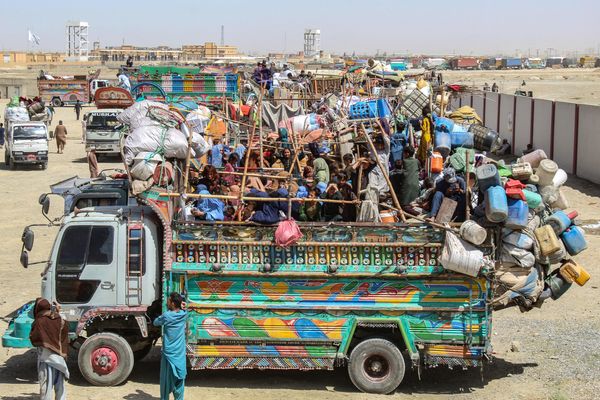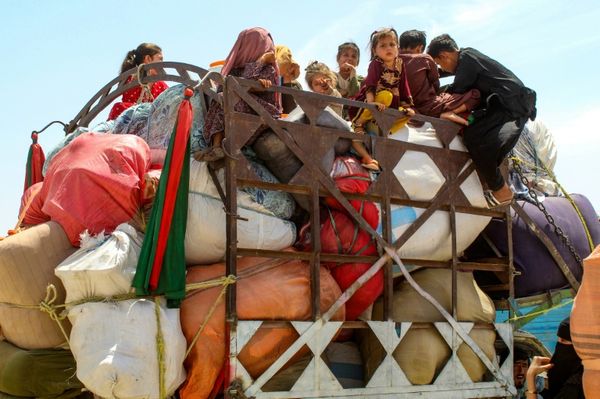Patrick Murphy remembers very clearly the first time he took cocaine. “I was 19, and that first line, I just fell in love with it,” he says. “The confidence it gave me, it was like nothing else. It was just so easy to keep taking it because it was everywhere. Even now, sitting here, I could get a bag in my hand in 10 minutes, faster than ordering a taxi.”
It took seven years for addiction to destroy Murphy’s life.
“Everyone around me was taking it, it didn’t feel like anything bad could happen, but it brought me to my knees,” he says.
“I lost my job, my relationship. My family had dealers knocking on their front door. Those last years of addiction were horrendous: just me, homeless, sitting in a van sniffing cocaine, and the only thing that mattered was that I could find a way to keep taking it. It took me to dark places I never thought I could escape from.”
Now, as he finishes an eight-month stay at Coolmine, a residential drug and alcohol centre on the outskirts of Dublin, Murphy says he sees himself as part of a new generation of drug users in Ireland, one that is caught in the grip of a cocaine epidemic that is devastating lives like his across the country.
“There are just so many people like me; young people, but also people of all ages, who kid themselves that because we’re not putting a needle in our arm we’re not like those other junkies on heroin who end up homeless or dead,” he says. “There are so many people I know who have no idea how much they are in addiction because nobody is taking it seriously.”
***
Cocaine use in Ireland has soared in recent years, as record amounts of the drug flood through Europe’s porous borders from South America, and social media platforms and encrypted messaging apps provide an efficient and low-risk marketplace for dealers. In 2023, the Irish authorities said they seized more than €210m worth of drugs – a record amount, most of which was cocaine. Yet, that was likely to be a tiny percentage of the amount getting into the country undetected.
Data from the European Monitoring Centre for Drugs and Drug Addiction (EMCDDA) shows an upwards trajectory in drug use across all age groups since 2016. Last year, the Irish were the biggest consumers of cocaine in Europe for people aged 15 to 34. But the drug is also becoming commonplace in older age groups, who may have never taken drugs before, says Prof Colin O’Gara, head of addiction services at Saint John of God hospital in Dublin and a clinical professor of psychiatry at University College Dublin.
“In Ireland, cocaine has become a public health emergency that shows no sign of abating,” Gara says. “This is a drug that has somehow managed to keep its reputation as benign, even glamorous, but causes huge and fast addiction problems. Health issues that lead from heavy use are myriad, including strokes, heart palpitations, key arteries in the brain can blow. There are many new users in their 50s and 60s – people who have never taken drugs before – who are suffering serious health problems as a result. And across the board we’re seeing devastating mental health impacts including depressive disorders, anxiety disorders and psychosis.”
According to Ireland’s National Drug Treatment Reporting system (NDTRS), which collects data on people coming into drug treatment services, the number of new cases reporting cocaine as the main “problem drug” increased by 258% between 2016 and 2022. Last year, NDTRS data showed that cocaine was the most common drug cited in new cases coming into treatment services across the country.
“For those of us working in addiction services, we’ve seen the situation just spiral out of control,” says Pauline McKeown, director at Coolmine, where Murphy has been receiving treatment.
“Cocaine use is so very, very prevalent, and so many more families are being impacted across the country. It’s a drug that leaps over socioeconomic barriers like no other drug I’ve encountered. It’s rural as much as urban, in multiple generations of the same families, in sporting communities, farming communities – and [there is] so much more recreational, problematic and individual cocaine use than we have ever encountered with other drugs like heroin.”
McKeown says that, historically, Coolmine has largely supported people seeking help for opioid addiction or heroin. In just a few years this has shifted dramatically. Now, she says, the biggest group of new clients coming through their doors are cocaine users.
“Last year, 36% of all of our admissions were for powder cocaine, and we expect this number to keep rising,” says McKeown.
***
Murphy’s mother, Sharron, says her son’s descent into cocaine addiction was a terrifying experience for their family.
“With my son I saw how it went from one line to two lines, from one bag to two, to three, with him just thinking he was a casual user,” she says. “At his 21st birthday party we found out he’d ordered €500 worth of cocaine. We could see him changing: he was an incredible football player but that just disappeared; he used to twitch all the time, his jaw would be shuddering; he was losing weight. He was always such a gentle soul but he turned aggressive, punching walls, it was frightening how he completely changed.”
Sharron says that over the years, she and her husband paid off tens of thousands of euros of drug debts in an attempt to protect their son from threats from drug dealers.
“He was ordering cocaine all the time on social media. We’d look out the window and see people leaving bags of drugs on the wheels of our car or on window ledges for him. We had people start knocking at our door asking for money all the time. My husband would go out on his own to meet strange people to try to pay off [Patrick’s] debts because we didn’t want him to get hurt. He bought a pair of knuckle-dusters online because he never knew who he’d be meeting. Patrick said they threatened to petrol bomb the house. It was this constant living nightmare we couldn’t escape from.”
Even now, Sharron says, the sound of her doorbell ringing “just sends me into a panic. My husband had a mental health breakdown. We’ve lost years of our lives to this, but I just see it going on around me all the time. I work in a pub and everyone in there is doing it – there are solicitors, professionals, men in their 50s and 60s and the younger people, they just don’t care,” she says.
“They will just take a bag out and do it openly, none of this sneaking off to the toilet. For some reason it’s now become acceptable to see someone shove cocaine up their nose while they’re ordering a drink. My own family are doing cocaine all the time, at family birthday parties, at christenings, they have no idea the damage and pain that it can cause. Nobody is listening. It feels completely out of control.”
Violence and intimidation of families and communities by people linked to the cocaine trade has become so prevalent that last year the government launched the Drug Related Intimidation and Violence Engagement (Drive) project: a multi-agency approach to tackling what is becoming a widespread criminal issue.
Siobhán Maher, coordinator at Drive, says: “Before I took this role at Drive I was a family support worker, and every second family member coming into our service was experiencing intimidation or violence linked to the drug trade. Cocaine is particularly linked to this because that’s where the real money is being made.
“We’re seeing young people recruited to sell drugs and forced into criminal activities, firearms moving into communities, arson, attacks on homes, violence and sexual violence and the threat of it becoming widespread, families being targeted to pay off huge drug debts. It is manifesting in different ways across the country but it’s everywhere, and no community is exempt.”
Maher said that Drive is planning a national awareness programme on cocaine later this year in an attempt to show the devastation the drug is causing to families across the country.
“What we need people to know is that there is help and support. You don’t need to deal with this on your own,” she says. “But the general public need to understand the link between this drug and horrendous violence and abuse happening to ordinary families. It’s not a problem that’s going to go away. If we don’t act now, it is only going to get a lot worse.”
Have you or your community been affected by the issues raised in this story? You can get in touch by filling in this form or messaging us on WhatsApp on +447766780300.
Please share your story if you are 18 or over, anonymously if you wish. For more information please see our terms of service and privacy policy.
In the UK, Action on Addiction is available on 0300 330 0659. In the US, call or text SAMHSA’s National Helpline at 988. In Australia, the National Alcohol and Other Drug Hotline is at 1800 250 015; families and friends can seek help at Family Drug Support Australia at 1300 368 186







